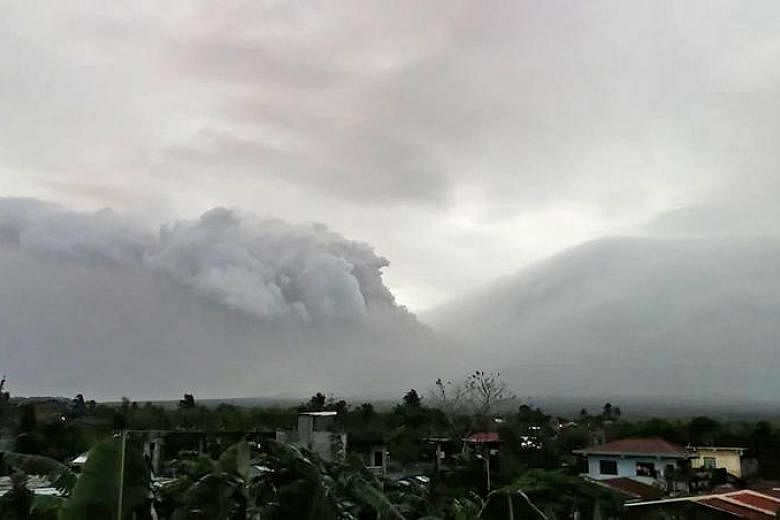MANILA (REUTERS) - The Philippines raised the alert at its restive Mayon volcano on Sunday (Jan 14) for the second time in less than 24 hours, from "increasing unrest" to "increased tendency towards eruption" within weeks or even days.
"This means that Mayon is exhibiting relatively high unrest and that magma is at the crater and that hazardous eruption is possible within weeks or even days," the Philippine Institute of Volcanology and Seismology (Phivolcs) said in its latest advisory.
Since the initial ash explosion on Saturday afternoon, there has been a continuing increase of seismic activity, according to Phivolcs.
After three phreatic or steam-driven eruptions and 158 rockfall events between 4.21pm on Saturday and 7.25pm on Sunday, Phivolcs noted that Mayon's summit crater "is now exhibiting bright crater glow that signifies the growth of a new lava dome and beginnings of lava flow towards the southern slopes".
Philippine authorities have ordered more than 900 families to evacuate due to the danger of rockfalls, landslides and sudden explosions or dome collapse that may generate hazardous volcanic flows.
"The public is strongly advised to be vigilant and desist from entering the 6km-radius Permanent Danger Zone to minimise risks from sudden explosions, rockfall and landslides," Phivolcs said.
It advised people experiencing ashfall to cover their noses and mouths with a damp, clean cloth or dust mask. It also said aircraft must avoid flying close to the volcano's summit.
Those within the slope of the volcano, but outside the 6-km danger zone, were told to take precautionary measures against possible roof collapses due to accumulated ash and rainwater.
Phivolcs chief Renato Solidum said the volcano appeared due for another eruption as it has been displaying abnormal behaviour since late last year.
Mayon, one of the country's most active volcanos, famous for its near-perfect cone shape, is in Albay province on the Philippine main Luzon Island. Mayon is more than 300km south-east of the Philippines capital of Manila.
Mayon's most destructive eruption was in February 1841, when lava flows buried a town and killed 1,200 people. It last erupted in 2014, spewing lava and forcing thousands of people to evacuate.


